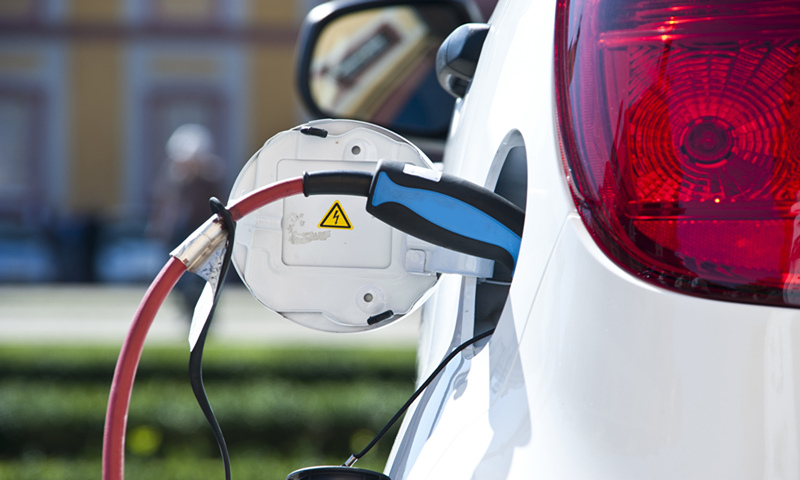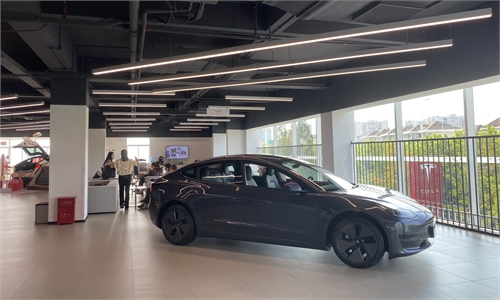
An NEV is being charged. Photo: VCG
China's Ministry of Transport (MOT) vowed to improve new-energy vehicle (NEV) charging facilities along the nation's highways, according to a construction outline issued by the ministry on Thursday, a further step to meet both NEV owners' charging needs and China's greenhouse gas emissions reduction goals.
The outline pointed to the need for highway charging facilities capable of serving 20 million NEVs by the end of the 14th Five-Year Plan period (2021-25). The expansion will take place gradually and the density of charging stations will be increased.
The ministry said that China is expected to deploy charging facilities to all highway service areas except those in high-altitude areas by the end of 2022.
Highways connecting provinces will provide charging services by the end of 2023, with highways connecting rural roads covered by 2025.
The MOT's data showed that China had 10.01 million NEVs on the road as of June, with the number expected to expand to 25 million in 2025 and 80 million in 2030.
Transport authorities and highway operators have built more than 13,300 NEV chargers in 3,102 service areas on highways, the MOT said.
The China Association of Automobile Manufacturers (CAAM) said that the number of NEV charging facilities has reached 3.92 million, up 101.2 percent year-on-year.
From January to July, 3.279 million NEVs were produced in China, and sales hit 3.194 million, both up 120 percent year-on-year, the CAAM's data showed.
China has set up 3.92 million NEV charging piles, the most worldwide, as of June, said the National Energy Administration.
The industry development outline issued in November 2020 stated that the construction of NEV chargers would be eligible for financial support and use of public infrastructure.
Industry analysts suggested that the scale of the NEV charger market may exceed 1 trillion yuan in the next decade.
Global Times



